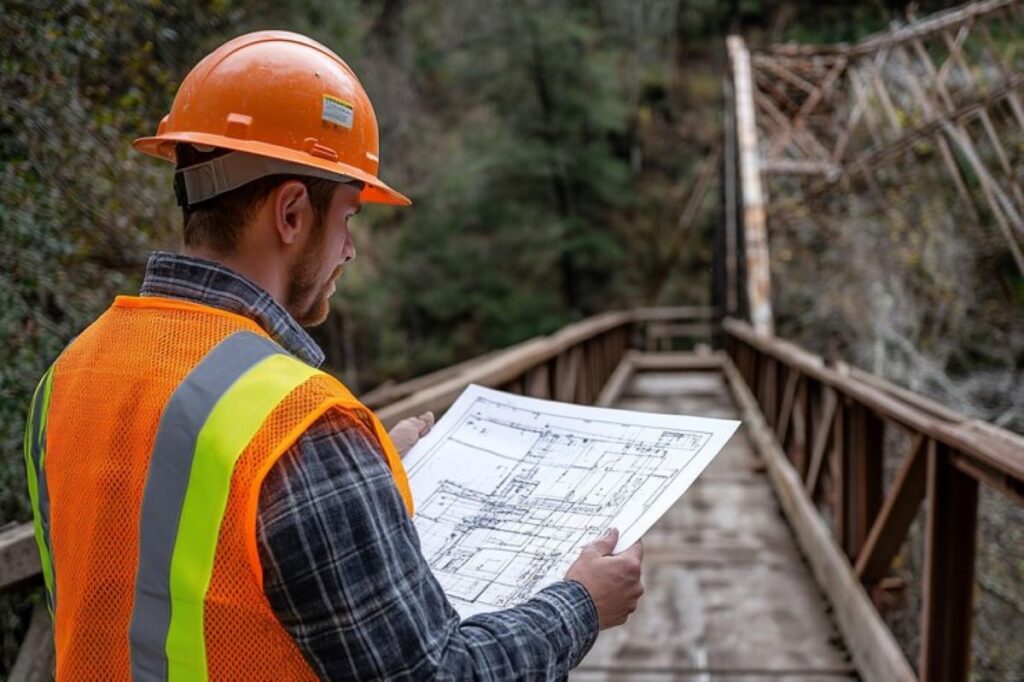
What a Contour Survey Plan Tells You About Your Land
A contour survey plan is an essential tool for understanding the topography of a piece of land. It provides detailed information about the elevation and slope of the terrain, which can be crucial for various applications, including construction, landscaping, and environmental management. This article delves into the significance of contour survey plans and what they reveal about your land.
Understanding Contour Survey Plans
A contour survey plan is a graphical representation of the land’s surface, showcasing the contours or lines that connect points of equal elevation. These lines are typically drawn at regular intervals, allowing for a clear visualisation of the land’s slope and features. Understanding how to read these plans is fundamental for anyone involved in land development or management.
The Basics of Contours
Contours are typically represented as lines on a map. Each line indicates a specific elevation, and the spacing between these lines reveals the steepness of the slope. Close-set contour lines indicate a steep incline, while widely spaced lines suggest a gentler slope. This information is vital for determining how water will flow across the land, which is crucial for drainage planning and erosion control. Additionally, contour lines can help identify potential areas for construction, as they provide insights into the natural topography that may influence the stability and accessibility of a site.
Key Features of a Contour Survey Plan
A contour survey plan includes various features that provide insight into the land’s characteristics. In addition to the contour lines, the plan may also display natural features such as rivers, lakes, and trees, as well as man-made structures like buildings and roads. This comprehensive view allows for better decision-making in land use and development. Moreover, the inclusion of vegetation types and soil characteristics can further enhance the utility of the plan, offering invaluable information for agricultural planning and environmental assessments. Understanding these features can aid in preserving local biodiversity and ensuring sustainable land management practices.
Applications of Contour Survey Plans
Contour survey plans are used in numerous fields, including civil engineering, architecture, and environmental science. They are essential for designing drainage systems, roads, and buildings, ensuring that these structures are appropriately situated and constructed to withstand environmental factors. Furthermore, they aid in land rehabilitation and conservation efforts, providing data necessary for maintaining ecological balance. In urban planning, contour surveys play a critical role in determining zoning regulations and land use policies, as they help planners understand how the natural landscape interacts with human activities. This understanding is particularly important in areas prone to flooding or landslides, where careful planning can mitigate risks and protect both people and property.
The Importance of Elevation Data
Elevation data is a critical component of contour survey plans. It not only informs the design and construction of structures but also plays a significant role in environmental management. Understanding the elevation of different areas can help identify flood zones, areas prone to erosion, and suitable locations for vegetation.
Flood Risk Assessment
In regions where flooding is a concern, contour survey plans are invaluable for assessing risk. By analysing the elevation of the land, planners can identify low-lying areas that may be susceptible to flooding during heavy rainfall. This information is crucial for determining where to construct drainage systems and for making informed decisions about land use in flood-prone areas.
Soil Erosion and Conservation
Contour survey plans can also highlight areas at risk of soil erosion. Steep slopes are more vulnerable to erosion, especially in heavy rain. By identifying these areas, landowners and managers can implement conservation practices, such as planting vegetation or installing barriers, to protect the soil and maintain the integrity of the land.
Vegetation Planning
Understanding the contours of the land can aid in effective vegetation planning. Certain plants thrive in specific elevations and slopes, and contour survey plans can help identify the best locations for planting. This is particularly important in agricultural planning, where the right vegetation can significantly impact crop yields and sustainability.

How to Obtain a Contour Survey Plan
Obtaining a contour survey plan typically involves hiring a licensed surveyor who can conduct the necessary measurements and create an accurate representation of the land. The process may vary depending on the size and complexity of the land, but generally involves several key steps.
Choosing a Surveyor
When selecting a surveyor, it is essential to choose someone with experience in contour surveying. Look for professionals who have a strong reputation and positive reviews from previous clients. A qualified surveyor will not only provide an accurate contour survey plan but will also be able to offer insights and recommendations based on their findings.
The Survey Process
The survey process typically begins with an initial consultation, during which the surveyor will discuss your specific needs and objectives. Following this, they will conduct a field survey, taking precise measurements of the land’s elevation and features. This data is then used to create the contour survey plan, which will be delivered to you in a format that is easy to understand.
Interpreting the Results
Once you have received your contour survey plan, it is crucial to take the time to interpret the results. A qualified surveyor can assist in explaining the findings and how they relate to your specific project or land use goals. Understanding the implications of the contour lines and elevation data will enable you to make informed decisions about your land.
Benefits of Using a Contour Survey Plan
The advantages of utilising a contour survey plan extend beyond mere elevation data. These plans provide a wealth of information that can enhance land management and development strategies. Here are some key benefits:
Enhanced Planning and Design
With a contour survey plan, planners and designers can make more informed decisions about where to place structures, roads, and other features. This leads to better utilisation of the land and can ultimately save time and money during the construction process.
Improved Environmental Management
Contour survey plans facilitate better environmental management by providing essential data for assessing risks such as flooding and erosion. By understanding the land’s topography, landowners can implement strategies to protect the environment and ensure sustainable land use.
Increased Property Value
For property owners, having a contour survey plan can increase the value of the land. Potential buyers are often more interested in properties that have been thoroughly assessed and documented, as this indicates that the land has been well-managed and is less likely to encounter issues in the future. You may like to visit https://inhouseuk.net/the-value-of-a-subdivision-surveyor-in-property-development/ to get about the value of a subdivision surveyor in property development.
Common Misconceptions About Contour Survey Plans
Despite their importance, there are several misconceptions surrounding contour survey plans that can lead to misunderstandings. Addressing these misconceptions is crucial for ensuring that landowners and developers fully appreciate the value of these surveys.
Contour Lines Are Just for Aesthetics
One common misconception is that contour lines are merely decorative elements on a map. In reality, these lines are vital for understanding the land’s topography and play a significant role in planning and development. Ignoring the information they provide can lead to costly mistakes.
All Contour Surveys Are the Same
Another misconception is that all contour surveys are created equal. The accuracy and detail of a contour survey can vary significantly depending on the methods used and the experience of the surveyor. It is essential to choose a qualified professional to ensure that the survey meets the necessary standards.

Contour Surveys Are Only for Large Projects
Many believe that contour surveys are only necessary for large-scale projects, but this is not the case. Even small landowners can benefit from contour surveys, as they provide valuable information that can aid in landscaping, gardening, and other land management activities.
Conclusion
A contour survey plan is an invaluable resource for anyone involved in land management or development. By providing detailed information about the elevation and slope of the terrain, these plans enable better planning, environmental management, and decision-making. Understanding the significance of contour survey plans can lead to more sustainable land use and ultimately enhance property value.
Whether you are a homeowner, a developer, or an environmental manager, investing in a contour survey plan is a step towards making informed decisions about your land. By recognising the insights these plans offer, you can ensure that your land is used effectively and responsibly, paving the way for a more sustainable future.



